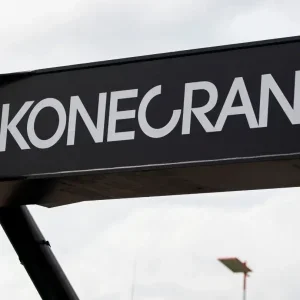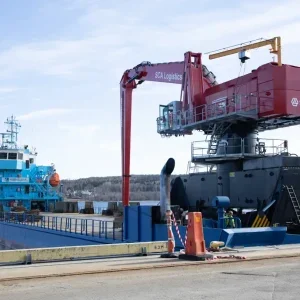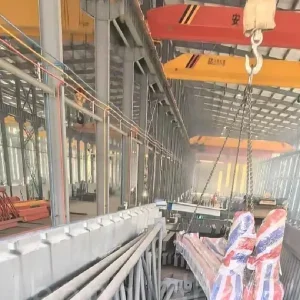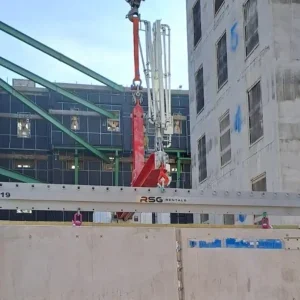FCCU units are used to produce gasoline fuels. Each is made up of a reactor, a regenerator and a piping process system. The total weight of this particular plate air grid assembly was approximately 302,000lbs.
The project took around one month to complete and concluded in March this year. This specific lift was performed the previous month.
The chainfalls were used in this way because reports indicated instability of the air grid. The concern was that with less pick points, the grid could have weak areas, “which may have crumbled during the lift,” said Nooter Construction – the contractor of the whole project and specialist in FCCU refinery turnarounds.
A “turnaround” is the nomenclature used to describe a plant unit when it is shutdown to perform maintenance work. Basically, the processing unit will be shutdown while performing repairs and/or upgrades, before it is put back online.
Standard chainfall units with 10ft lift were used – all of which were load tested and certified by IHS prior to arrival on site.
There were other options previously considered, all involving some sort of combined lift with the cone shell, but the load was going to become too top heavy. Also, if lifting combined with the shell, two hook-up points would have been required. With all the support columns they were not able to get sufficient numbers of lugs located in the shell.
Utilising the numerous pick points available allowed Nooter to monitor each point and determine if any areas were inadequate to hold up to the lift. For example, it says if an individual hoist appeared “spongy” it could have either moved the attachment to a more solid area of the plate grid, or installed reinforcing.
The chainfalls were attached from above by slings which connected to the Tralift (picking crane) and on the lower hook to slings and shackles supporting the 64 pick point – 40 on the outer ring and 24 within the grid.
The maximum load on each hoist was only 2.35 US ton, so they were not at capacity. Nooter says multi-point shell rigging lifts are relatively routine in the business. Put simply, it involves taking the slack out of the rigging with a relatively light load and then manually shaking the line by hand to get
a feel for what slings are tighter than others.
By using 40 chain hoists on the outside plate ring and 24 chain hoists on the inside plate rings the contractors were able to lift the entire plate air grid with the chain hoists, and, thus, “float it” in the shell.
“We pulled up on the chain hoists and used the crane load cell to know when we should be floating, in order to determine if we were hung up on something.” This method also determined when it would be safe to “get in” under the air grid and cut off the supporting columns, it explained.
The chainfalls were attached from above by slings which connected to the Tralift (picking crane) and on the lower hook to slings and shackles supporting the 64 pick point – 40 on the outer ring and 24 within the grid chainfall 1 Utilising the numerous pick points available allowed Nooter to monitor each point and determine if any areas were inadequate to hold up to the lift chainfall 2 Standard chainfall units with 10ft lift were used – all of which were load tested and certified by IHS prior to arrival on site chainfall 3 The chainfalls were used in this way because reports indicated instability of the air grid. The concern was that with less pick points, the grid could have weak areas chainfall 4






